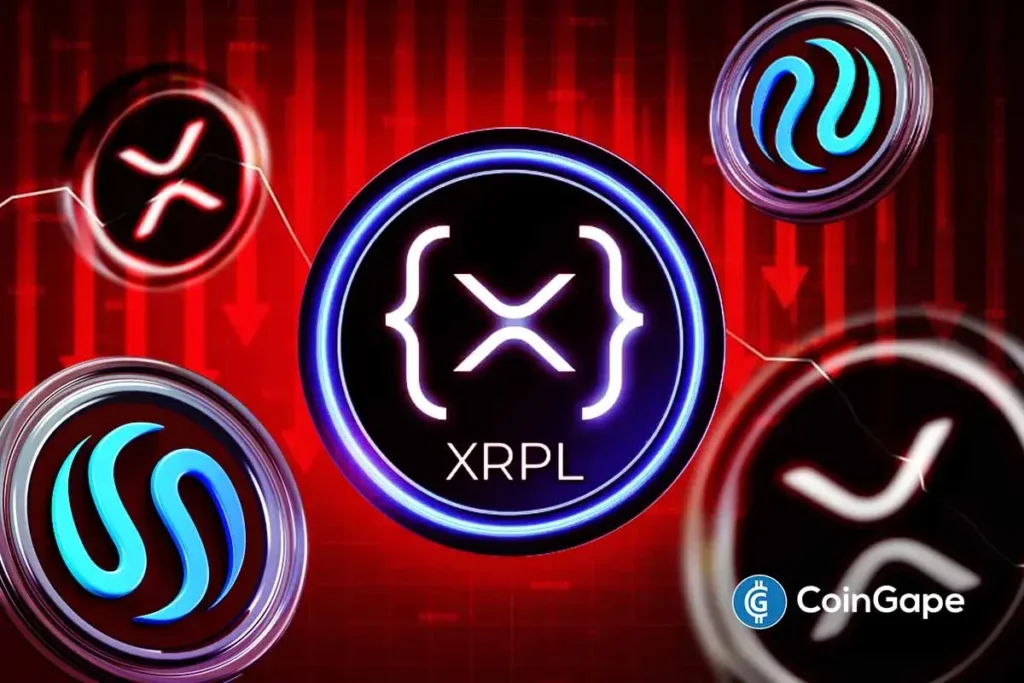Injective’s Integration of XRP: A Shift in On-Chain Finance
Injective is making strides in on-chain finance with the impressive integration of XRP, coinciding with the launch of the XRP Ledger EVM Sidechain. This groundbreaking move positions Injective as a leader in harnessing the potential of XRP. However, despite this positive advance for the blockchain, the price of INJ has witnessed a significant decline of nearly 5% today.
The Details of Injective’s XRP Integration
In a recent announcement through social media platform X, Injective has revealed its strategic partnership with Ripple and the XRP Ledger, signifying the adoption of the XRP token on its platform. This milestone comes on the heels of the XRPL’s latest EVM integration, which enhances the network’s capabilities by introducing Ethereum compatibility and smart contract functionalities. This integration not only augments the ecosystem of XRP but also establishes Injective as the first major blockchain to leverage the benefits of Peersyst’s XRPL EVM mainnet, offering users access to one of crypto’s most significant assets. Following this announcement, XRP experienced a notable surge of 6.8%, climbing to a weekly high of $2.319, although it later retracted to $2.19. Even so, XRP is still trading positively, showing a modest increase of 1.13% in the last 24 hours, alongside a remarkable surge in trading volume of 114%, reaching $4.14 billion.
In contrast, the INJ token has faced harsh conditions, with its price dropping 4.9% in a day and currently trading at $10.42—a 10% drop over the week and an 11% decline over the month. The trading volume for INJ has also decreased by 4.5%, currently standing at $82.36 million.
Institutional Adoption of XRP
Injective is not alone in its XRP endeavors; many companies are increasingly recognizing the advantages of incorporating XRP as a strategic asset for their treasury. Legal expert John Deaton recently highlighted this trend, noting that several public companies have adopted XRP for treasury assets, which signifies a substantial shift in institutional adoption within the crypto landscape.
Deaton mentions at least five companies that have initiated an XRP treasury strategy. Notably, Vivopower International has raised $121 million with plans to allocate $100 million to XRP. This ambitious initiative aims to establish the first publicly traded company centered around XRP and is backed by Saudi investors with guidance from former SBI Ripple Asia executive Adam Traidman. Other companies investing in XRP include Worksport Ltd., Hypperscale Data Inc., and Webus International Ltd. With Hyperscale planning to launch an XRP lending platform by late 2025, it positions the token as a valuable asset on its balance sheet. Additionally, Wellgistics Health Inc. is leveraging XRP for immediate payments, reducing the traditional delays associated with banking processes.
Ripple’s Token as a Strategic Treasury Asset
The integration of the XRP token into Injective’s framework and its increasing adoption among companies as a treasury asset signifies a critical movement within the crypto sector. With institutional interest in XRP on the rise, accelerated by developments such as the ongoing Ripple lawsuit and the launch of the XRPL EVM Sidechain, the token’s future looks promising. The strategic incorporation of XRP into business treasuries establishes it as a viable asset for institutional portfolios, fostering further engagement with the cryptocurrency market.
More companies are expected to participate in this wave of XRP integration, given its potential benefits in the evolving landscape of digital finance. This trend illustrates the growing acceptance of cryptocurrencies as legitimate assets and reflects a broader shift within the financial sector towards more decentralized and innovative solutions.
Implications for the Future of On-Chain Finance
The integration of XRP by Injective, coupled with its rising acceptance as a treasury asset by businesses, suggests a dynamic shift in the paradigm of on-chain finance. As more companies recognize the utility of cryptocurrencies, the landscape is likely to evolve, with increased institutional adoption driving innovations in technology and finance.
This evolution is not only paving the way for enhanced functionalities within blockchains but also fostering a culture of collaboration among projects. As seen with Injective’s strategic alignment with Ripple, partnerships will drive further advancements, expanding the usability of tokens like XRP. This trajectory portends a healthier crypto ecosystem where assets are utilized in practical and strategic ways for both businesses and consumers.
Conclusion: A Transformation in On-Chain Finance
Injective’s integration of XRP is a pivotal milestone in the realms of blockchain and finance. This development underscores the importance of embracing innovative technologies that enhance financial systems. Although the INJ price has struggled in the wake of these advancements, the long-term implications concerning the rise of XRP as a treasury asset cannot be overlooked.
As institutional interest continues to build and more companies employ XRP in their treasury strategies, the future may hold notable changes for cryptocurrencies and their role in traditional finance. The ongoing collaboration between various blockchain ecosystems will not only enrich the digital asset landscape but also cultivate avenues for investment and growth in unprecedented ways. It is evident that the evolution of on-chain finance is well underway, with the integration of XRP serving as a testament to this transformative journey.


